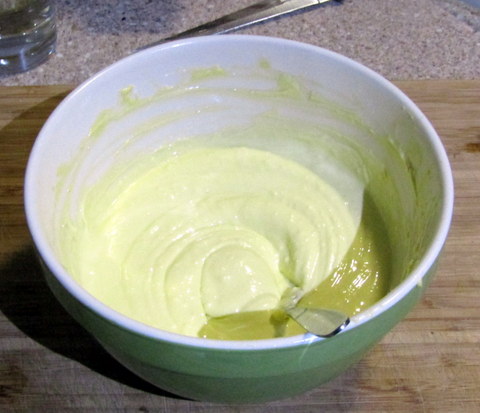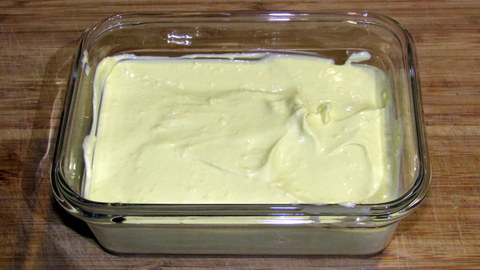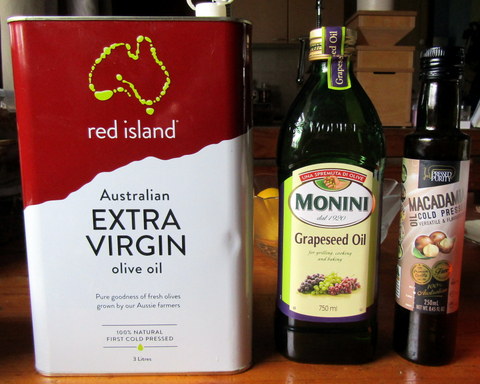Years ago we used butter. Then there was a lot of negative publicity about saturated fats, including butter, so we moved across to margarine. Lately there have been margarine horror stories (most of which are probably crap) but the pendulum does seem to have swung back the other way. Plus, the margarine we buy and use comes in plastic tubs, which is a concern for two reasons –
1. Possible leaching of plastic additives (eg plasticisers) into the margarine, and
2. The plastic, while being ‘recyclable’ is highly likely to not be ‘recycled’ even though we dutifully wash up the tubs and put them into our recycling bin.
Yes, it is possible to wash the tubs up and then use them as containers for stuff in the pantry, kitchen, garage or office, but in my experience they eventually breakdown and wind up in the recycling, or worse, landfill anyway. So this does not solve the problem only defers it for a while. Plus over the years you find yourself up to your armpits in empty (but very clean) margarine containers.
So, what to do?
We decided to go back to butter, wrapped in paper to obviate the plastic packaging issue, but we also wanted it to be spreadable, hence this article!
First Try
Spreadable butter is made by combining regular butter with a vegetable oil of some description. I decided to use virgin olive oil because it was Australian produce, is pretty good for you and was our oil of choice (packaged in steel) so I already had it available to me. I read around trying to find out what the best ratio of oil to butter was, and that seemed to be one cup (250ml) of oil to a 250g pack of butter. This seemed a bit much to me so I decided to cut back a bit to ¾ cup of oil (190ml) and see how it went.
Process
I took the butter out of the fridge and left it to warm to room temperature for most of the day, having read of all the horror stories of people in a hurry trying to soften it in the microwave and winding up with melted butter instead (a big no-no!). I placed the softened butter into a bowl and mulched (technical term) it around with a fork making a thorough mess, then tossed in about half the oil, using the fork to combine the butter and oil.
I have read on the interent where people use a food processor to achieve the butter and oil mix, and how it results in a ‘whipped butter’ texture, but this was not what I was shooting for, I just wanted standard butter…… but spreadable. I must admit, using the fork was a bit of work, but as I added more oil to the butter it did get a bit easier to mix. By the time I had mixed in the whole ¾ cup, the butter was quite sloppy and I was concerned I had put in a bit too much, but resolved to see how it went.
I placed the spreadable butter into a glass container with a re-usable plastic lid. I know, I know! But the lid did not contact the butter, and it was the best I had at the time. Now, courtesy of my elder daughter, I have glass containers with wooden lids and only a thin silicone seal, so there!
Results
The results have been pretty positive. While the butter is not super spreadable it works OK, but I’m thinking the original ratio may have been a teensy bit right. Also, even though it is virgin olive oil under some circumstances (like when applied to hot steamed vegetables) it can give the butter a bit of an ‘olivey’ taste that I am not over-wrapped in. Having said that, I think this has been a success overall, and I would happily do it again, but in the interested of experimentation my next mix will be with a more neutral tasting oil and I might up the level to a full 250ml cup.
Olive oil summary –
Pros: we already had some; it was packed in steel not plastic; it was produced in Australia
Cons: The strong olive taste was not pleasant to us
Second try
As mentioned above I was pretty satisfied with the original spreadable butter but wanted to try with a more neutral oil, so I got hold of some grapeseed oil, which has been used by others for this purpose. It is available in glass bottles which is what I wanted. My original thought had been for rice bran oil, but was only able to find it in plastic bottles, which kind of defeated the purpose somewhat.
To ratchet things up I added one cup of oil to a 250gm block of butter, and while I must admit I am unsure whether it is a property of that particular oil or whether the butter was a bit warmer, but it mixed in effortlessly and in a few minutes I had a quite homogenous oil and butter mix. I let it cool in the fridge and it hardened up quite nicely but still remained quite spreadable. Also the oil, which was quite neutral in taste and smell, did not really impact the flavour of the butter, so that was a plus.
Grapeseed oil summary –
Pros: packed in glass not plastic; mild flavour
Cons: Not produced in Australia; it was marginally more expensive than the olive oil
Third try
This time I again went for a very light oil in the form of macadamia oil. It was also packaged in glass (in a 250ml bottle, perfect to mix with one 250gm block of butter!) and had the benefit of being Australian produce. I followed the process I worked out previously – allowed the butter to come to room temperature, placed it in a bowl, mulched it with a fork and then added the oil. I added the oil in increments of about 50 ml at a time and, again, it mixed with the butter really well. The fork did the mixing job well and towards the end I could have even used a whisk to incorporate the oil the viscosity of the mix was so thin.
With the oil and butter mixed I placed it into a glass container with a bamboo lid and then stuck it in the fridge. Overnight it hardened up nicely but still remained easily spreadable. To be honest, there seemed to be no discernible difference in taste between the macadamia oil/butter mix and the grapeseed oil/butter mix, but the macadamia oil is considerably more expensive, being almost twice the cost of the grapeseed oil.
Macadamia oil summary –
Pros: Packed in glass; mild flavour; Australian produce.
Cons: Expensive
Conclusion
Our conclusion has been that we will buy in some grapeseed oil and that will likely be our go-to to make spreadable butter with, but if we are flush with cash we will splash out and get the macadamia oil!






